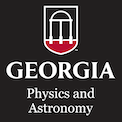Organic semiconductors (OS) have been used as active layers in devices such as organic light-emitting diodes (OLEDs), photovoltaic cells, field-effect transistors, and lasers. Recently there has been a growing interest in spin and magnetic field effects in these materials. These include optically detected magnetic resonance where long spin coherence time was demonstrated; OLEDs where both conductivity and electroluminescence have been strongly modulated by an external magnetic field; and organic spin valves (OSV) where spin injection from ferromagnetic (FM) electrodes and spin transport in OS were obtained. The interest in spin transport in OS has been motivated by the weak spin-orbit interaction that is caused by the light building block elements such as carbon and hydrogen, and the small hyperfine interaction (HFI) with the nuclei.
In this talk the status of the young field of ‘Organic Spintronics’ will be reviewed. The necessary ingredients needed for the success of this field will be summarized, and evaluated by recent experiments. In particular the role of the HFI in magneto-transport will be elucidated via the isotope effect. Two applications of Organic Spintronics will be discussed: organic diodes with two FM electrodes for use as OSV; and organic diodes with no FM electrodes for use as magnetic sensors.


